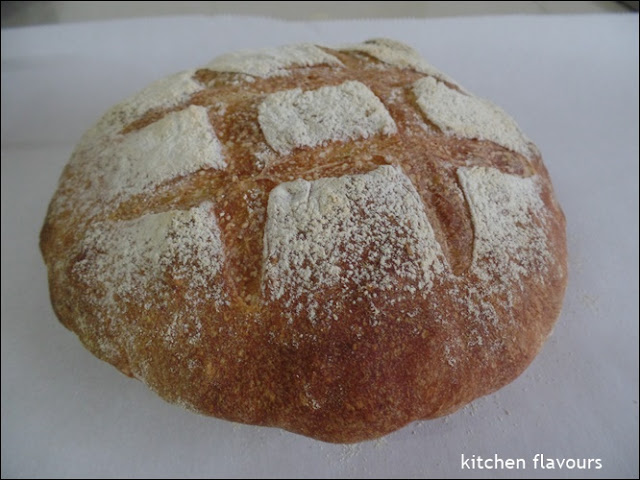It's Potluck Week at I Heart Cooking Clubs (IHCC). I've made our current featured chef, Hugh Fearnley-Whittingstall's delicious stew.

In the recipe, either good quality sausages or pork chops can be used, or a mixture of both. I have used pork shoulder, as I love it for braising and slow cooking dishes. I have omitted the celeriac as it is not an ingredient which is easily available over here. For the parsnip, I have replaced with carrots. I did not tie the bouquet garni together, I merely drop into the pot, the bay leaves, parsley stems, and some dried thymes. Firstly the meat has to be browned first in some hot oil, which are then removed and keep aside. White wine is then poured into the casserole to deglaze all the caramelized bits that got stuck in the pot, smells really nice, and pour onto the pork. The vegetables are then sauteed in some oil for 10 minutes until they are softened, then return the pork along with their juices, to the casserole along with all the other ingredients. Simmer over a low heat until everything is tender, about 1 hour to 1-1/4 hours. I've added the potatoes during the last 30 minutes of cooking time.
This is a delicious stew. The meat and vegetables are tender and the soup is so tasty and full of flavour. We enjoyed this stew with slices of homemade bread, Rustic Country Bread for dinner. There's no leftovers! Yum!
Sausage and Root Vegetable Stew
(River Cottage Everyday, Hugh Fearnley-Whittingstall)
serves 4
2-3 tbsp rapeseed or olive oil
6 good sausages, cut into large chunks, or 4 pork chops (or 4 of each) (I use pork shoulder)
1 glass of dry cider or white wine (use white wine)
2 onions, chopped
1 leek, sliced
2 celery stalks, chopped
1/4-1/2 celeriac, cut into chunky cubes (omitted)
2 medium floury potatoes, peeled and cut into chunky cubes
1 large parsnip, cut into chunky cubes (replace with carrots)
1 bouquet garni (a bay leaf, 2 sprigs of thyme and some parsley stalks, tied together with string)
1 tbsp chopped parsley (optional)
Sea salt and freshly ground black pepper
Heat 1 tablespoon of the oil in a casserole or large saucepan. Add the sausages (and/or chops) and brown them well over a medium heat - if you're using chops, you might need to do this in 2 batches. Transfer them to a dish.
Pour the cider or wine into the casserole and stir to deglaze, scraping to release any bits of caramelised meat from the base of the pan. Pour the pan juices into the dish with the sausages (and/or chops).
Heat another 1-2 tablespoons of oil in the casserole, add the onions, leek and celery and cook gently for 10 minutes or so, until softened. Then return the sausages (and/or chops) to the casserole with their juices and add the celeriac, potatoes and parsnip. Tuck in the bouquet garni, season with salt and pepper and add enough water to almost cover everything. Bring to a very gentle simmer.
Cook uncovered, or partially covered very gently over a low heat (or with the lid on in the oven preheated to 140C/Gas Mark 1) for about 1 hour, until everything is tender.
Take out the bouquet garni and check the seasoning. The potatoes should have started to break down and thicken the liquor a little. If not, just mash some of the vegetables against the side of the dish with a fork. Scatter over some chopped parsley, if you like, and serve.
I'm linking this post with I Heart Cooking Clubs (IHCC), theme for this week
July IHCC Potluck

and
I'm linking this post with Cookbook Countdown #19 hosted by























